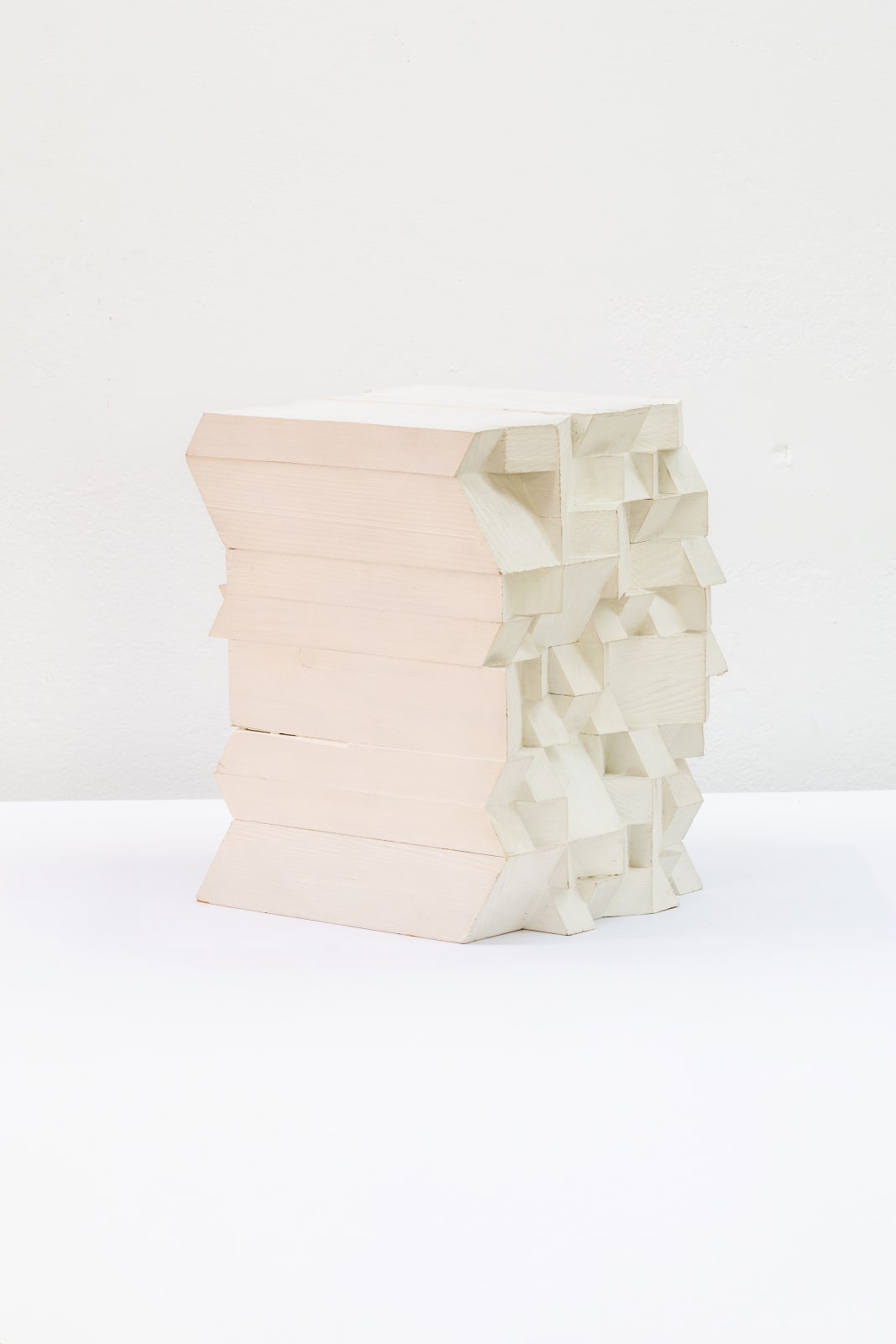-
Artworks

Sérgio Camargo
Untitled (Polyhedral volume - First table piece), 1963Painted wood19.1 x 16.5 x 13.5 cmThis type of work by Sérgio de Camargo is extremely rare, particularly as it is one of his earliest table pieces made in wood. Created in 1963, the piece marks a pivotal moment when Camargo "discovered" and began working with reliefs using small wood pieces, a technique that would define his unique style. That same year, he joined the Groupe de Recherche d'Art Visuel (GRAV), won the International Sculpture Prize at the Paris Biennale, and produced a small set of works, including this polyhedral volume with mutable interpretations, as he described in his writings.This type of work by Sérgio de Camargo is extremely rare, particularly as it is one of his earliest table pieces made in wood. Created in 1963, the piece marks a pivotal moment when Camargo "discovered" and began working with reliefs using small wood pieces, a technique that would define his unique style. That same year, he joined the Groupe de Recherche d'Art Visuel (GRAV), won the International Sculpture Prize at the Paris Biennale, and produced a small set of works, including this polyhedral volume with mutable interpretations, as he described in his writings.
The piece represents a geometric form broken and re-articulated into new, non-reversible configurations. This work highlights Camargo's departure from traditional constructivism, maintaining geometric precision while allowing for unpredictability. His work was widely celebrated in Europe, helping to establish his international career.
Wooden sculptures, especially table pieces, are quite scarce within his body of work. This piece, in particular, exhibits a strong kinetic character, with forms that shift with changes in light and perspective. Its blend of empirical geometry and kineticism recalls Malevich’s white structures, fundamental to abstract-geometric art.
Federico Morais, in his book 'Three-dimensionality in Brazilian art of the twentieth century' said of Camargo’s work: "Sérgio de Camargo created reliefs and sculptures to attract light... In his work, light and shadow coexist, cut with precision and sensuality."
